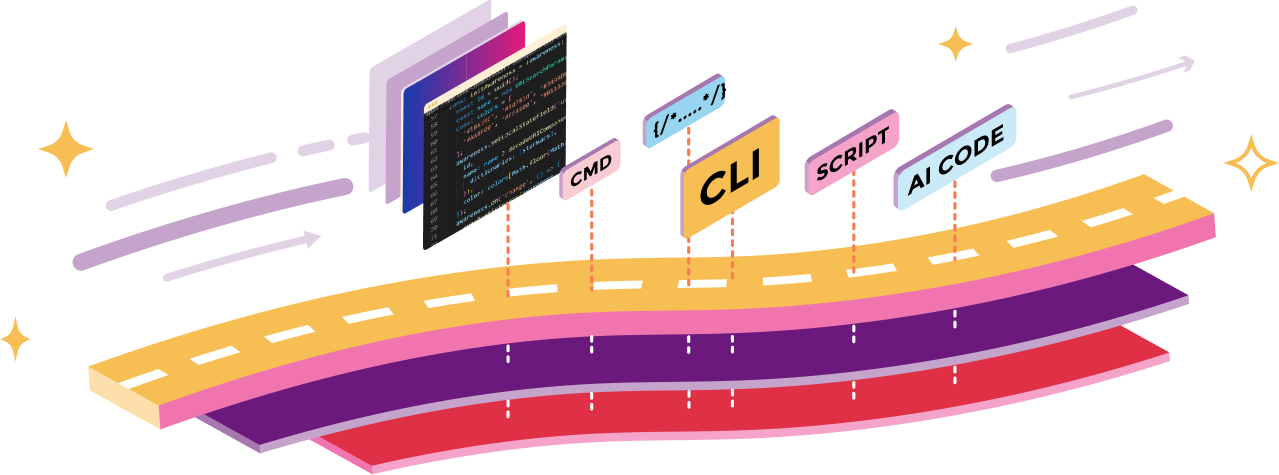
The self-service portal smooths the day-to-day developer experience
Empower end-users to interact with cloud infrastructure and software development lifecycle with less need for DevOps via an useful self-service portal.

What is platform engineering?

Developer experience platform
Platform Engineering is the practice of building useful abstractions and self-service infrastructure within an organization, to unify scattered tools and accelerate developer productivity. Platform Engineering aims to mitigate the cognitive overload caused by a shared-responsibility model that's gone too far, by smoothing the day-to-day developer experience.
Golden Path for development
Golden Path is the templated composition of well-integrated code and capabilities for rapid project development. Including A getting-started tutorial, Skeleton source code, Dependency management, CI/CD pipeline template, Cloud infrastructure-as-code template, Kubernetes YAML files, Policy guardrails, Logging and monitoring instrumentation, Reference documentation.


80 %
Establish platform teams
By 2026, 80% of software engineering organizations will establish platform teams as internal providers of reusable services, components, and tools for application delivery. Platform engineering will ultimately solve the central problem of cooperation between software developers and operators.
- Reported by Gartner
Why platform engineering benefits
Increase productivity
Dev team decides what infrastructure should be created, based on project templates, guidance, and collaboration with the self-service infrastructure team (Platform + DevOps team). Dev team is not waiting time for the IT or networking team to set up resources.
Leverage knowledge-sharing
By enabling teams with self-service, the organization can share the software practices, best practices, and standards widely for all projects (if they need).
Respond to shortage of infrastructure, SRE, or DevOps engineers
IT talents are in high demand on the market. If we can structure and organize a team of experts as a platform team, then we can leverage and optimize the resources ad people in the organization.
Control the costs of infrastructure
Time-to-Live (TTL) required for resources, be able to destroy resources any time need.
Unify stacks and technologies
Through learning paths, developer golden path, TechRadar…
Implement and control security
Abstract away the complex of security from developers by integrated DevSecOps toolsets, IAM, or security network concerns…
Control integrations
Abstract away the complex of security from developers by integrated DevSecOps toolsets, IAM, or security network concerns…Abstract away the complex via authentication services, SCM services, project management tools…ex of security from developers by integrated DevSecOps toolsets, IAM, or security network concerns…
Platform engineering model
The rise of Internal Developer Platforms (IDP)

Figure: Platform engineering model built by NashTech’s experience
An IDP also leverages its knowledge graph to support scenarios that are critically important to other enterprise stakeholders, including in architecture, ops, security, platform, reliability engineering, and FinOps. It is a powerful workflow and analytics tool that enables organizations to build more reliable, secure, cost-efficient software faster.
The open platform for building self-service portals
Abstract away the complexity of cloud infrastructure and microservice software development lifecycle as well as combine other NashTech accelerators such as Architectural Library, DevSecOps pipeline, and Observability into one unified platform.
Featuring
Buil-in Technologies
